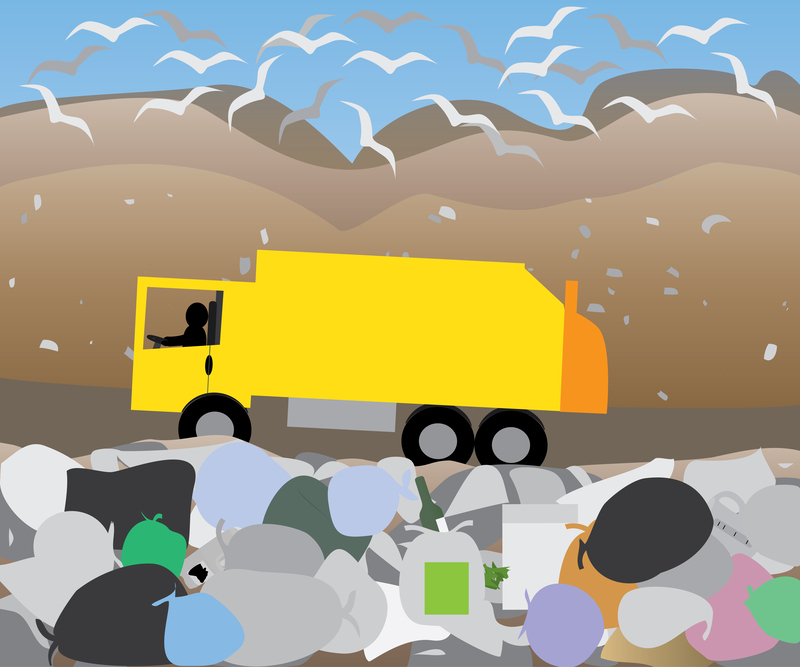The Ultimate Guide to Properly Throwing Away Your PPE Waste
PPE (personal protective equipment) has become an essential part of modern life, especially after the worldwide outbreak of COVID-19. From disposable masks and gloves to protective gowns and face shields, PPE is now used everywhere, from healthcare settings to our daily commutes. However, with increased use comes the crucial responsibility of proper PPE waste disposal. Are you disposing of your PPE safely and responsibly? If not, you could be putting both public health and the environment at risk. In this ultimate guide, we will walk you through the most effective methods for disposing of PPE waste, explain its importance, and share tips to minimize your environmental impact.
What Is PPE Waste?
PPE waste refers to the disposal of personal protective equipment after use, including:
- Single-use masks (surgical masks and respirators)
- Disposable gloves (nitrile, latex, vinyl)
- Protective gowns and coveralls
- Face shields and eye protection
- Shoe covers and head covers
These items, originally designed for hygiene and safety, often contain plastics and synthetic materials, making them an environmental challenge if not disposed of correctly.

Why Is Proper Disposal of PPE Waste So Important?
The increase in PPE use has had environmental, public health, and safety consequences:
- Environmental Impact: PPE materials, especially single-use plastics, do not decompose easily. Improperly discarded PPE ends up in landfills, water bodies, and natural habitats, causing pollution and harming wildlife.
- Human Health Risks: Used PPE can carry pathogens and infectious material. When handled or discarded carelessly, it increases the risk of the spread of viruses and bacteria.
- Occupational Health: Sanitation workers and waste handlers are at increased risk of exposure to contaminated PPE if not separated and processed correctly.
Proper PPE waste management can significantly reduce these risks. It is crucial for both the environment and public safety to understand the correct methods of PPE waste disposal.
Types of PPE Waste and Their Disposal Techniques
1. Disposable Masks
- Type: Surgical masks, cloth masks, and respirators.
- Risk: Potential to be contaminated with respiratory droplets.
How to Dispose:
- Do not flush masks down toilets or sinks, as they can cause blockages and reach waterways.
- If possible, cut the ear loops to prevent wildlife entanglement.
- Wrap used masks in a paper towel or biodegradable bag.
- Place them in a dedicated PPE or general waste bin--never in recycling streams!
2. Disposable Gloves
- Type: Nitrile, latex, or vinyl gloves.
- Risk: Can carry infectious materials from surfaces or bodily fluids.
How to Dispose:
- Turn the glove inside out as you remove it, taking care not to touch the exterior.
- Wrap the gloves together and put them in a tied garbage or PPE waste bag.
- Avoid mixing with recyclables as they cannot be recycled through traditional processes.
3. Face Shields and Eye Protection
- Type: Plastic face shields, goggles.
- Risk: Less risk if outer surfaces aren't contaminated, but should be treated as potentially hazardous after use in healthcare or suspected infection areas.
How to Dispose:
- If they are single-use, follow the disposal instructions of your institution or local guidelines.
- Disassemble if possible (remove elastic bands, etc.) and bag securely before throwing them away.
4. Protective Gowns and Coveralls
- Type: Single-use and reusable gowns made of various materials.
- Risk: High risk in medical and laboratory environments.
How to Dispose:
- Single-use gowns should be folded inside out, avoiding contact with the outer surface, and sealed in a waste bag.
- Reusable gowns must be laundered and disinfected according to manufacturer's instructions before next use.
Step-by-Step PPE Disposal Guide
- Remove PPE carefully: Always remove PPE by following the correct procedure. Avoid touching your face and wash your hands immediately after handling used PPE.
- Contain and wrap: Place all used PPE in a bag--preferably a biodegradable or at least robust waste bag--to avoid leaks.
- Seal the bag: Tie the bag securely to prevent accidental exposure to infectious material.
- Label if necessary: In healthcare or high-exposure settings, label PPE waste according to local or hospital protocols.
- Dispose according to local guidelines: Do not mix PPE waste with recyclables or compostables.
Special Considerations: Disposing of PPE Waste in Different Settings
At Home
For households, the risk of PPE items being contaminated is lower but still possible. Always:
- Bag masks and gloves separately from recycling.
- Never toss PPE into garden waste or recycling bins.
- Launder reusable masks or cloth PPE regularly with hot water and soap.
- Wash your hands immediately after disposing of PPE waste.
In Healthcare & Medical Settings
Strict procedures must be in place due to the high risk of infectious contamination. Guidelines often include:
- Color-coded bins or bags for PPE waste (often yellow or marked "biohazard").
- Clear labeling and secure storage until waste collection.
- Disposal through specialized medical waste handlers, often involving high-temperature incineration or autoclaving.
At Workplaces
Employers should provide explicit instructions and designated bins for PPE disposal:
- Place labeled bins in accessible locations.
- Encourage regular hand hygiene after handling workplace PPE.
- Train staff on the importance of segregation--PPE waste should not be mixed with other trash or recyclables.
Environmental Impact: How Improper PPE Waste Disposal Harms the Planet
Improper disposal of PPE waste can cause serious environmental problems:
- Plastic pollution: Most disposable PPE contains plastics such as polypropylene and polycarbonate. These materials persist in ecosystems, leaching chemicals and microplastics into soil and water.
- Wildlife threats: Animals can become entangled in PPE (such as mask ear loops) or ingest small pieces, leading to injury or death.
- Waste management overload: Sanitation systems--especially in developing regions--can be overwhelmed by the surge of PPE waste, leading to improper dumps or open burning.
By disposing of PPE responsibly, you protect the health of our planet, fellow citizens, and future generations.
Innovative Solutions and Sustainable Alternatives
While proper disposal is critical, the ultimate solution is to reduce PPE waste at its source. Here are some innovative and sustainable alternatives:
- Reusable Masks: Opt for washable cloth masks when risk levels are low, reducing the reliance on disposable options.
- Biodegradable PPE: Some companies are developing masks and gloves from plant-based or compostable materials.
- PPE Recycling Programs: Specialized recycling schemes (such as TerraCycle's PPE program) can safely recycle certain types of used PPE.
- Education & Awareness: Encourage your organization, school, or community to develop policies and campaigns for responsible PPE usage and waste disposal.
PPE Waste Disposal FAQs
Can PPE be recycled?
Generally, PPE such as masks and gloves cannot be recycled through household recycling systems due to contamination risks and their material composition. However, specialized recycling programs may accept specific items. Always check locally before disposal.
Is it safe to burn PPE waste?
Burning PPE waste at home or in open air is strongly discouraged! Many PPE items can release toxic chemicals when incinerated improperly. Only licensed facilities with suitable filtration should handle PPE incineration.
How can I reduce my PPE waste impact?
- Choose reusable alternatives whenever possible.
- Dispose of PPE carefully and responsibly.
- Cut the loops on masks before discarding to protect wildlife.
- Avoid single-use PPE unless necessary for high-risk environments.

Government Guidelines and Legal Responsibilities
Most countries have issued guidance for PPE waste disposal, particularly in healthcare and public institutions. Non-compliance can lead to penalties and, more importantly, place communities at risk.
Key points from international guidelines include:
- Separate PPE from recyclables and compostables
- Use double-bagging in case of suspected infection
- Dispose of PPE in secure, closed containers
Check your local authority or environmental agency's website for detailed information relevant to your area.
Conclusion: Playing Your Part in Responsible PPE Waste Management
The surge in personal protective equipment use has improved public health and safety but comes with a significant environmental responsibility. By following the advice and guidelines in this comprehensive guide to PPE waste disposal, you are doing your part to:
- Protect your health and the health of those around you
- Reduce environmental harm from plastic and microplastic pollution
- Support essential workers and waste handlers
- Promote a cleaner, safer world for future generations
Remember: Properly disposing of your PPE waste is easy and essential. Be mindful, be responsible, and spread the word! For further resources or community programs for PPE recycling and waste reduction, contact your local environmental agency or waste management service.
Together, we can make proper PPE disposal a part of our everyday routine and help build a healthier, more sustainable future.
```